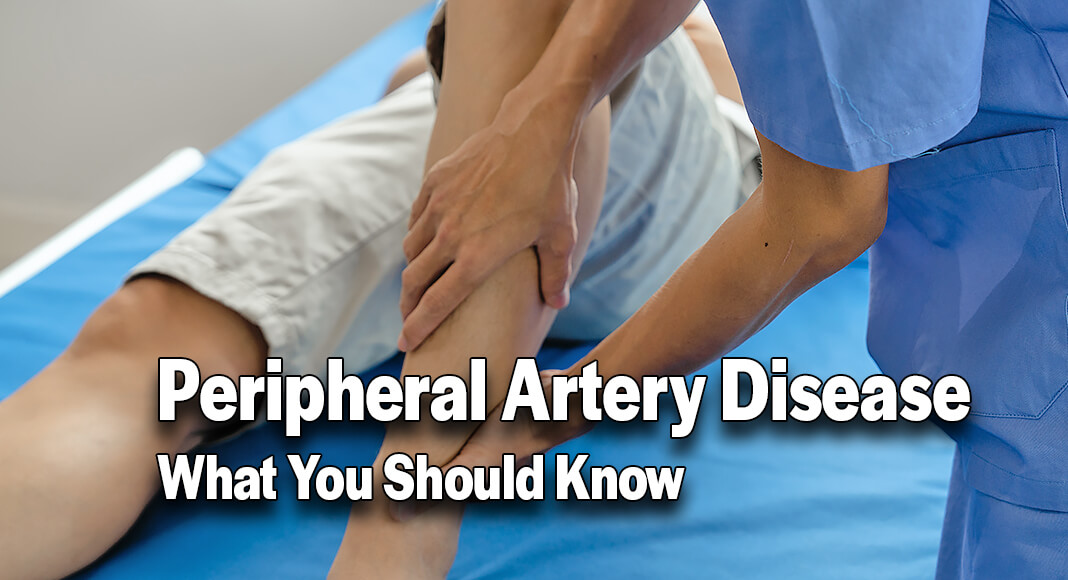
Mega Doctor News
By Sharon Theimer / Mayo Clinic News Network
JACKSONVILLE, Florida — Leg pain and leg cramps aren’t always an orthopedic issue: Both can be signs of peripheral artery disease, or PAD, a serious blood-flow issue with implications for the heart. In this expert alert, Young Erben, M.D., a vascular surgeon at Mayo Clinic in Jacksonville, Florida, explains how the most common form, PAD that affects the legs and feet, is treated. Options include a surgical technique from the past that Mayo surgeons are reviving and refining to offer new hope to patients with advanced PAD.
In peripheral artery disease, narrowed arteries reduce blood flow to the affected limbs. They do not get enough blood flow to keep up with the demand. It is important to manage PAD as early as possible, Dr. Erben says. In the worst cases, PAD can progress to open sores that do not heal, causing tissue death and limb loss.
Globally, peripheral artery disease tends to be undertreated, even though doctors widely recognize it as a risk factor for heart disease. PAD has become more prevalent in recent years; at least 113 million people worldwide 40 or older have the disease, a 2023 report shows.
“Lower extremity PAD, or PAD in the legs and feet, is a spectrum,” Dr. Erben says. “It ranges from people who have leg pain when walking to more advanced cases, where the blood flow to the leg is so impaired that patients are in pain when they’re resting or are developing wounds in their toes and feet.”
Common symptoms include leg pain or cramps while walking and small sores on the feet that do not heal, Dr. Erben says. Your first inclination might be to think of these as small things to ignore, but it is best to bring up these symptoms with your healthcare team, she advises.
“Especially if you have diabetes, high blood pressure, high cholesterol or smoke cigarettes and you have these aches and pains, bring it up to your doctor because it may uncover something,” Dr. Erben says. “Those little details are how we catch most PAD.”
Treatment depends on where someone is on the spectrum. Early on the spectrum, treatment typically includes:
- Addressing risk factors for peripheral artery disease such as high blood pressure, high cholesterol, diabetes, obesity and smoking.
- Screening for additional blood-flow problems, such as coronary artery disease, may be needed.
- Developing a walking program — typically involving time on a treadmill — that the patient can pursue at home or with a physical therapist or trainer.
“Walking develops new collateral blood vessels and increased blood flow to the legs,” Dr. Erben explains. “I have seen it with my patients over time: Over three to six months, if they’re very diligent about walking, the pain with walking will diminish, and people who are in the very early stages of PAD can almost go back to normal.”
People in the middle of the PAD spectrum will have more plaque buildup and blockages in blood vessels in their legs. Medication may be needed to increase blood flow. In some cases, a procedure may be needed, such as the minimally invasive insertion of balloons and/or stents to open arteries; surgery to remove blockages; or bypass surgery, in which a surgeon removes a vein from another area in the body and connects it above and below a blocked artery to improve blood flow, Dr. Erben says.
Blood thinners may be prescribed to help maintain the improved circulation.
In the most advanced peripheral artery disease, people may have ulcers in their feet that become infected. The goal then becomes saving the affected limb: Surgeons may perform bypasses and, in some cases, an operation called deep vein arterialization (DVA), in which they connect an artery with a vein to try to provide additional blood flow to help wounds heal.
This procedure was pioneered elsewhere in the 1970s. It lost popularity amid the development of less-invasive techniques such as balloons and stents that could be used earlier in PAD. Vascular surgeons at Mayo Clinic are now reviving and refining it, Dr. Erben says.
“It is considered an innovation, but it is one of those that was an old technique, then somehow forgotten, and now it has been resurrected. We started doing this roughly three years ago for patients whose limbs are threatened in the last stage of PAD and we are having success.”
In very advanced cases of peripheral artery disease, treatment may require amputation of the affected limb, such as toes or the leg below or above the knee.
The worst-case scenarios with advanced PAD and the success often seen when the disease is recognized and managed early, are why it’s important to tell your doctor if you start experiencing recurring leg cramps, also known as charley horses; leg pain that starts with exercise and ends with rest or that doesn’t go away; or a foot sore, even a small one, that lingers, Dr. Erben says.
“The mild symptoms are the ones that people tend to ignore,” Dr. Erben says. “Unfortunately, they often do not realize that they have a problem until it becomes a dire problem. The most important message that I can give to patients is that you may think it’s a little complaint, but please bring it up to your doctor. Because it may uncover something that you never thought of.”
About Mayo Clinic
Mayo Clinic is a nonprofit organization committed to innovation in clinical practice, education and research, and to providing compassion, expertise and answers to everyone who needs healing. Visit the Mayo Clinic News Network for additional Mayo Clinic news.










